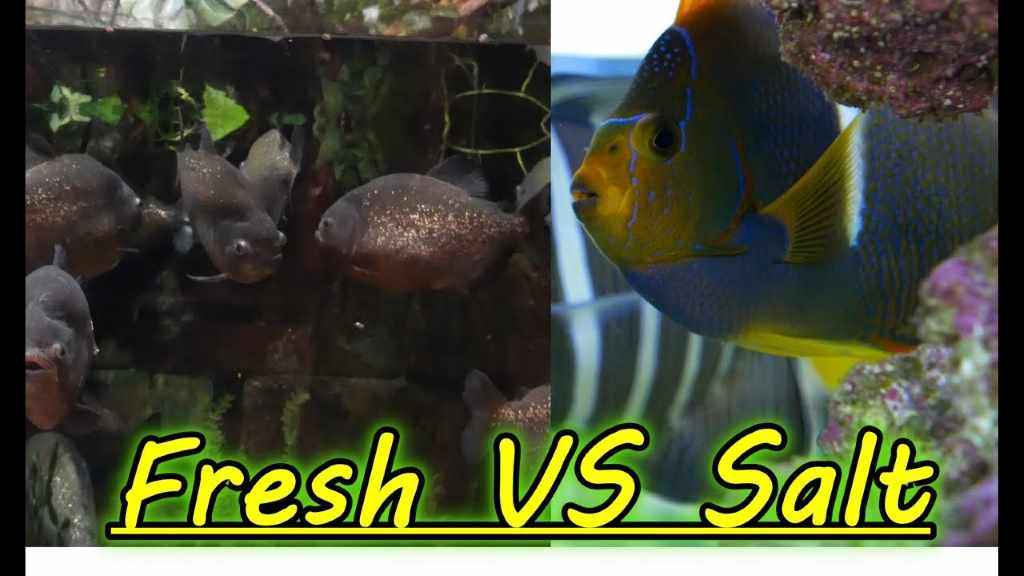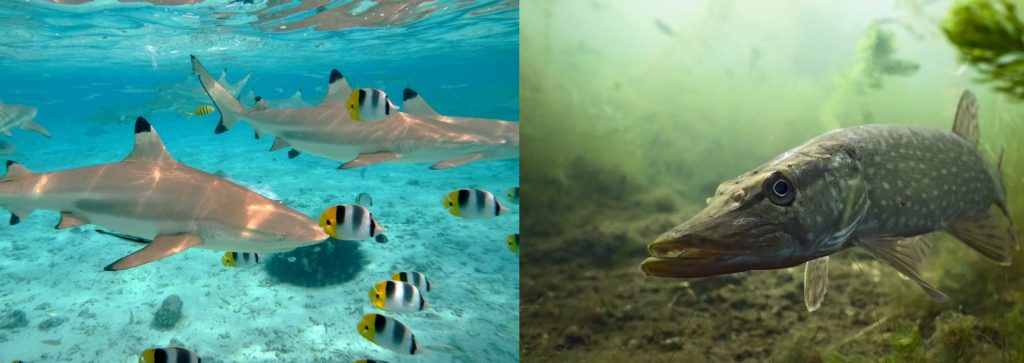The aquatic realm, teeming with diverse life, offers two distinct habitats for fish: freshwater and saltwater. These environments, while both aquatic, present vastly different challenges and opportunities, shaping the biology, behavior, and distribution of their fish inhabitants.
Freshwater: The Dynamic Inland Waters
Freshwater habitats encompass a wide range of environments, including rivers, streams, lakes, ponds, and wetlands. These habitats are characterized by low salt concentrations (less than 0.05%) and dynamic conditions, with fluctuations in temperature, water flow, and nutrient levels.
- River and Stream Life: These flowing waters are home to fish adapted to currents, such as trout, salmon, and catfish. They often have streamlined bodies and strong muscles for swimming against the flow. Some species, like salmon, make epic migrations between freshwater and saltwater to breed.
- Lake and Pond Dwellers: These still waters host a variety of fish, including bass, sunfish, and carp. They often have diverse feeding strategies, from predatory species hunting for prey to herbivores grazing on algae.
- Wetland Wonders: Wetlands, like swamps and marshes, provide critical habitat for many fish species, including juvenile fish that find refuge and food in these nutrient-rich environments. If you’re interested in learning how to tell if a fish is female, these environments are excellent places to observe various fish behaviors and characteristics. Read more about the importance of wetlands in supporting fish populations and how they contribute to the ecosystem.
Saltwater: The Vast Ocean Realm
Saltwater habitats, which include oceans, seas, and coral reefs, cover over 70% of the Earth’s surface. These habitats are characterized by high salt concentrations (around 3.5%) and relatively stable conditions, with less variation in temperature and water flow than freshwater habitats.
- Open Ocean Wanderers: The vast open ocean is home to a multitude of fish species, from tiny plankton-eating fish to massive apex predators like sharks and tuna. These fish have adaptations for long-distance travel and navigating the open water.
- Coral Reef Communities: Coral reefs are underwater oases of biodiversity, supporting a kaleidoscope of fish species, including colorful reef fish, parrotfish, and angelfish. These fish have intricate relationships with the coral, relying on it for food and shelter.
- Deep-Sea Dwellers: The deep ocean, a mysterious and unexplored realm, is inhabited by strange and fascinating fish adapted to extreme pressure and darkness. Many have bioluminescent organs to attract prey or communicate in the dark depths.
Adapting to the Challenge: Physiological Differences
Fish have evolved remarkable adaptations to thrive in their respective habitats.
- Osmoregulation: This is the process of maintaining the balance of salt and water within the body. Freshwater fish have to constantly expel excess water that enters their bodies through osmosis, while saltwater fish need to conserve water and excrete excess salt.
- Body Shape and Fins: Fish in flowing waters often have streamlined bodies and powerful fins for maneuvering in currents, while fish in still waters may have more rounded bodies and flexible fins for precise movements.
- Coloration and Camouflage: Fish use a variety of colors and patterns to blend in with their surroundings, whether it’s the dappled sunlight of a forest stream or the vibrant hues of a coral reef.
Threats and Conservation
Both freshwater and saltwater habitats face numerous threats, including pollution, overfishing, habitat destruction, and climate change. These threats can disrupt ecosystems, endanger fish populations, and impact the livelihoods of millions of people who rely on fish for food and income. Conservation efforts are crucial to protect these vital habitats and the diverse fish species that call them home.
A World of Wonders
Fish habitats, whether freshwater or saltwater, are windows into the incredible diversity and adaptability of life on Earth. Understanding these habitats and the fish that inhabit them is key to appreciating the interconnectedness of ecosystems and the importance of protecting these fragile environments.




